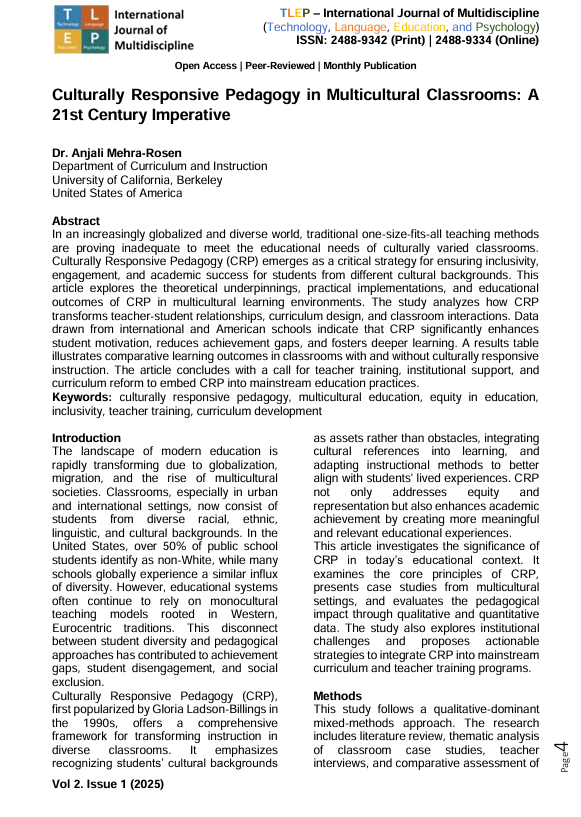The Use of Neural Networks in Teaching Vocabulary and Grammar in German Lessons for Middle School Students
Keywords:
artificial intelligence, neural networks, German language education, vocabulary teaching, grammar, digital education.Abstract
This study investigates the application of neural networks in teaching vocabulary and grammar to middle school students in German lessons. Modern artificial intelligence technologies, particularly neural networks, serve to enhance language learning effectiveness by expanding vocabulary, fostering interactive grammar learning, and tailoring educational content to individual student needs. Applications and platforms based on neural networks are analyzed in terms of their capacity to assess, analyze, and provide personalized learning materials. The results contribute to the digitalization of German language education and provide methodological recommendations for teachers on integrating these technologies into lessons.
References
Djankhodjaev, N. (2024). Application of Neural Networks in Education. Innovative Technologies and Education, 3(5), 492-494.
Mamadjanova, N. A. (2024). Developing Critical Thinking Skills in Primary Language Education. Education and Development, 2(1), 61-80.
Saimnazarova, D. A. (2022). Developing Reading Skills in German for Students. Issues in Philology, 4(3), 17-25.
Nazarova, M. A. (2018). Teaching Polysemy in German Text Reading. Linguistic Research, 5(2), 45-53.
(2024). Innovative Technologies in Teaching German. Ares.uz, 1(1), 35-41.
Duolingo Statistics. https://www.businessofapps.com/data/duolingo-statistics/?utm





